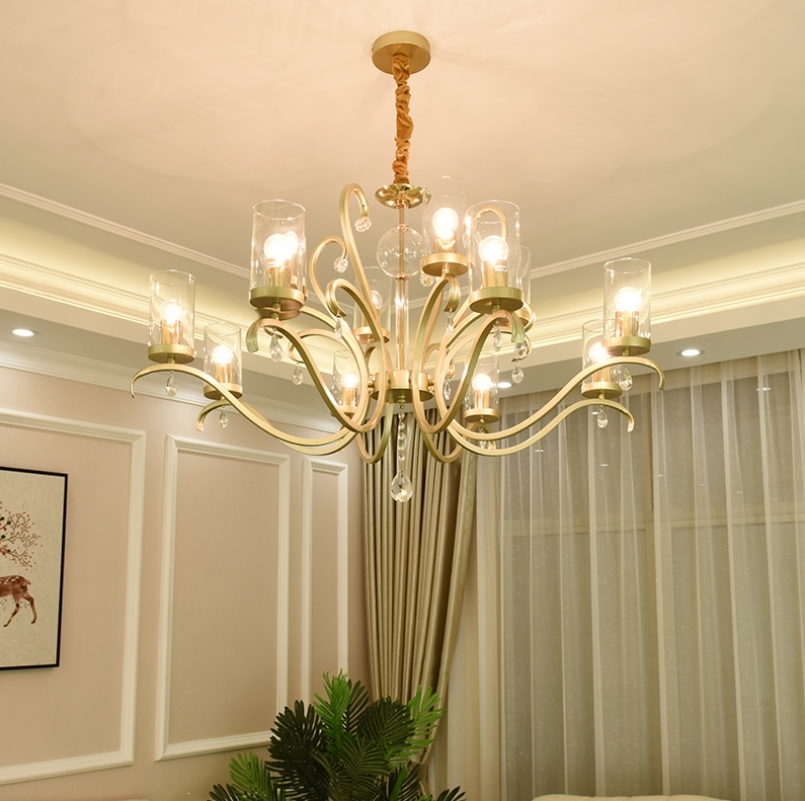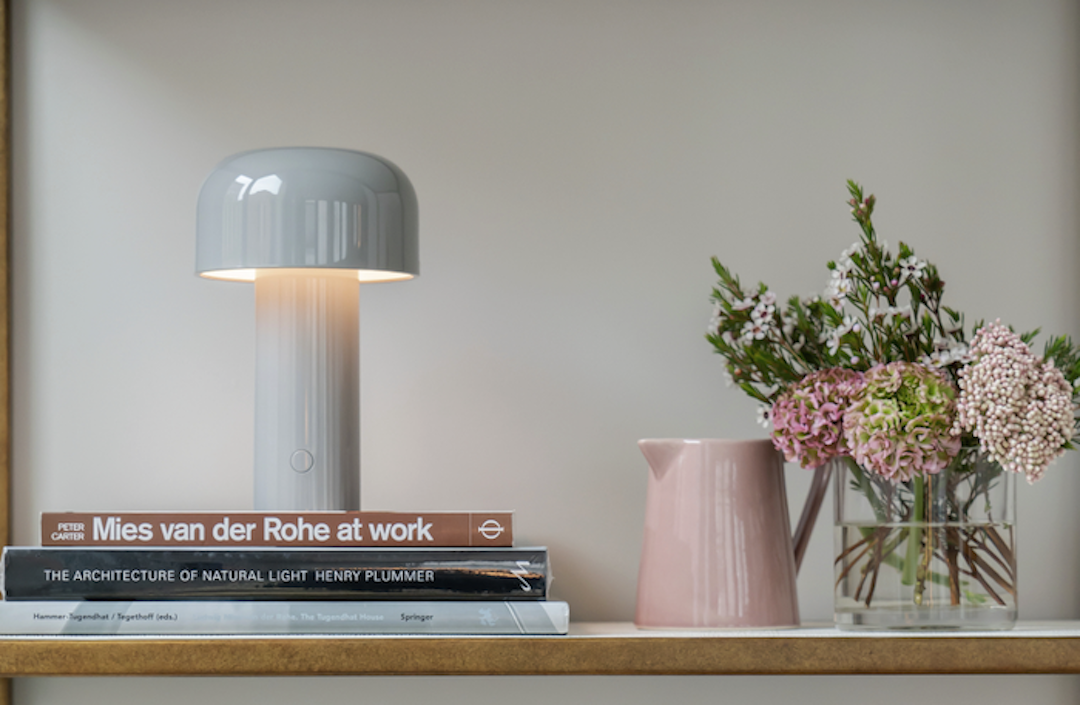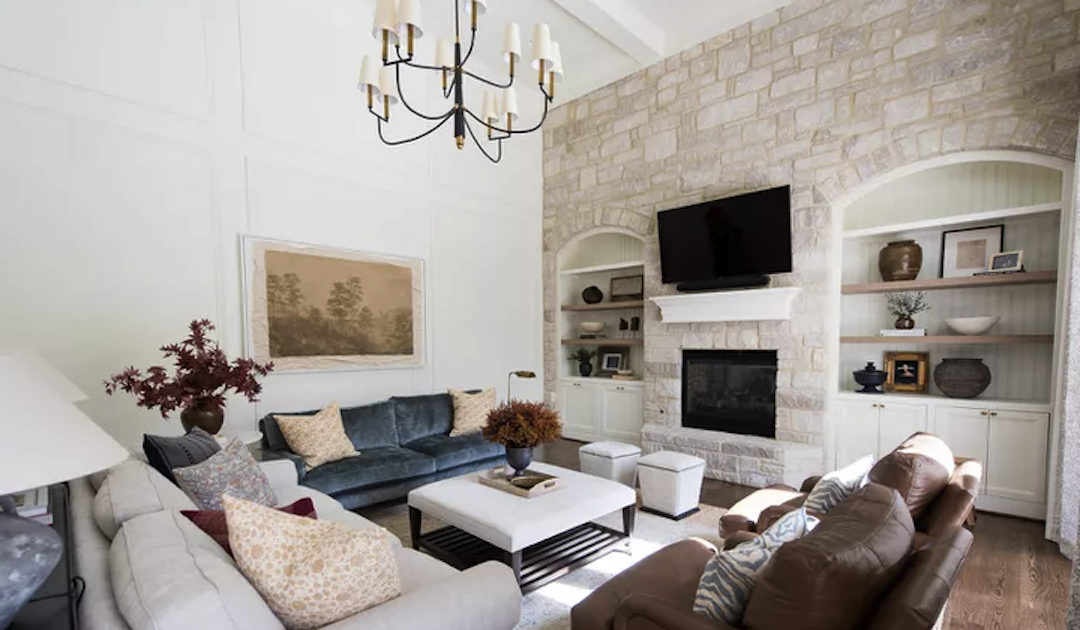Chandeliers have a long and intriguing history dating back to ancient times. The term “chandelier” originates from the French word “chandelle,” meaning candle. During the medieval period, chandeliers were utilized to hold candles and illuminate large spaces such as castles and churches.
These early chandeliers were typically constructed from wood or iron and featured complex designs reflecting the owner’s wealth and status. As technology progressed, chandelier designs became more elaborate and incorporated diverse materials. Crystal chandeliers gained popularity among European nobility in the 18th century, adding luxury to their residences.Yahiloo
The use of crystals enhanced light brightness and created a striking display of refracted light. The 19th century saw further evolution in chandelier design with the introduction of gas and electric lighting. Gas lighting allowed for more intricate and delicate designs, while electric lighting made chandeliers more accessible to the general public.
Contemporary chandeliers are available in a wide range of styles and materials, from traditional crystal designs to modern fixtures. The history of chandeliers demonstrates their lasting appeal and adaptability to changing times.
Choosing the Right Chandelier for Your Living Room
Size and Style Matter
When choosing a chandelier, it’s essential to consider the size and style of your living room. A spacious, open living room with high ceilings may benefit from a grand, statement chandelier, while a smaller space may require a more understated design.
Aesthetic Considerations
Additionally, consider the overall aesthetic of your living room. If you have a modern, minimalist decor, a sleek, contemporary chandelier may be the perfect choice. On the other hand, if your living room features traditional or vintage elements, a classic crystal chandelier could be the ideal focal point.
Functionality and Maintenance
It’s also crucial to consider the function of the chandelier. Do you want it to provide ambient lighting for the entire room, or do you need it to illuminate a specific area, such as a dining table or seating area? Finally, don’t forget to take into account the maintenance and cleaning requirements of the chandelier. Some designs may be more intricate and require regular cleaning and upkeep, while others may be more low-maintenance.
The Role of Chandeliers in Interior Design
Chandeliers play a crucial role in interior design, serving as both functional lighting fixtures and decorative elements that can elevate the overall aesthetic of a space. In addition to providing illumination, chandeliers can also serve as focal points that draw attention to specific areas within a room. For example, a grand chandelier hanging above a dining table can create a sense of elegance and sophistication, while also providing practical lighting for meals and gatherings.
Furthermore, chandeliers can help establish the mood and ambiance of a room. A dimmable chandelier with warm lighting can create a cozy and intimate atmosphere, perfect for relaxing or entertaining guests. On the other hand, a bright, sparkling chandelier can add drama and glamour to a space, making it ideal for formal occasions or special events.
In terms of style, chandeliers come in a wide range of designs, from traditional and ornate to sleek and modern. This versatility allows chandeliers to complement various interior design styles, whether it’s classic, contemporary, or eclectic. By carefully selecting the right chandelier for a space, interior designers can enhance the overall look and feel of a room while also fulfilling its practical lighting needs.
Timeless Elegance: Classic Chandelier Styles
Classic chandelier styles have stood the test of time and continue to exude timeless elegance and sophistication. One of the most iconic classic chandelier styles is the crystal chandelier, which features sparkling crystals that refract light and create a dazzling display. Crystal chandeliers are often associated with luxury and opulence and are commonly found in grand ballrooms, palaces, and upscale homes.
Another classic style is the candle-style chandelier, which harkens back to the early days of chandeliers when they were used to hold candles. These chandeliers typically feature multiple arms with candle-shaped lights and are often made of wrought iron or brass. The candle-style chandelier adds a touch of old-world charm and warmth to any space, making it a popular choice for traditional and vintage-inspired interiors.
Additionally, the empire chandelier is another classic style that originated in 18th-century France. Characterized by its symmetrical shape and cascading crystals, the empire chandelier exudes grandeur and sophistication. This style is often associated with neoclassical and baroque interiors and adds a sense of drama and luxury to any room.
Modern Twists on Traditional Chandeliers
While classic chandelier styles continue to be popular, modern twists on traditional designs have emerged as a fresh and innovative approach to lighting design. One modern interpretation is the geometric chandelier, which features clean lines and angular shapes that add a contemporary edge to traditional chandelier designs. Geometric chandeliers are often made of metal or glass and are ideal for modern and minimalist interiors.
Another modern twist is the industrial-style chandelier, which draws inspiration from utilitarian design elements such as exposed bulbs, metal accents, and raw materials like iron and steel. Industrial chandeliers add an edgy and urban vibe to spaces and are perfect for loft-style apartments or industrial-inspired interiors. Furthermore, organic and nature-inspired chandeliers have become increasingly popular in modern interior design.
These chandeliers feature natural materials such as wood, rattan, or bamboo and often incorporate organic shapes and textures. Organic chandeliers bring a sense of warmth and earthiness to a space while adding a touch of contemporary flair.
Tips for Installing and Maintaining Your Chandelier
Secure Installation is Key
When installing a chandelier, it’s crucial to ensure that it is securely anchored to the ceiling using appropriate hardware. If you’re not confident in your ability to install the fixture yourself, it’s best to hire a professional electrician or contractor to do the job.
Regular Maintenance for Optimal Condition
Once your chandelier is installed, regular maintenance is essential to keeping it in top condition. Dusting the fixture regularly with a soft cloth or duster can help prevent dirt and grime from building up on the surface. For crystal chandeliers, using a mild glass cleaner can help restore their sparkle and shine.
Electrical Components and Manufacturer’s Instructions
Additionally, it’s important to check the electrical components of the chandelier periodically to ensure that everything is in good working order. It’s also important to consider any specific cleaning or care instructions provided by the manufacturer. Some chandeliers may require special cleaning products or techniques to maintain their finish or materials.
By following these tips for installation and maintenance, you can ensure that your chandelier remains a beautiful and functional addition to your living room for years to come.
The Impact of Lighting on the Living Room Atmosphere
The lighting in your living room has a significant impact on its overall atmosphere and mood. Chandeliers play a crucial role in creating different lighting effects that can transform the ambiance of the space. For example, soft, warm lighting from a chandelier can create a cozy and inviting atmosphere that’s perfect for relaxing or spending time with loved ones.
On the other hand, bright, sparkling light can add drama and glamour to special occasions or formal gatherings. In addition to setting the mood, chandeliers can also help define different areas within the living room. For example, placing a chandelier above a dining table can create an intimate and elegant setting for meals and entertaining guests.
Similarly, positioning a chandelier above a seating area can provide focused lighting for reading or conversation while adding visual interest to the space. Furthermore, chandeliers can enhance the overall design aesthetic of the living room by serving as decorative focal points. Whether it’s a classic crystal chandelier or a modern geometric fixture, the style and design of the chandelier can complement other elements in the room such as furniture, artwork, or architectural features.
By carefully considering the impact of lighting on the living room atmosphere, you can choose a chandelier that not only meets your practical lighting needs but also enhances the overall look and feel of your space.





